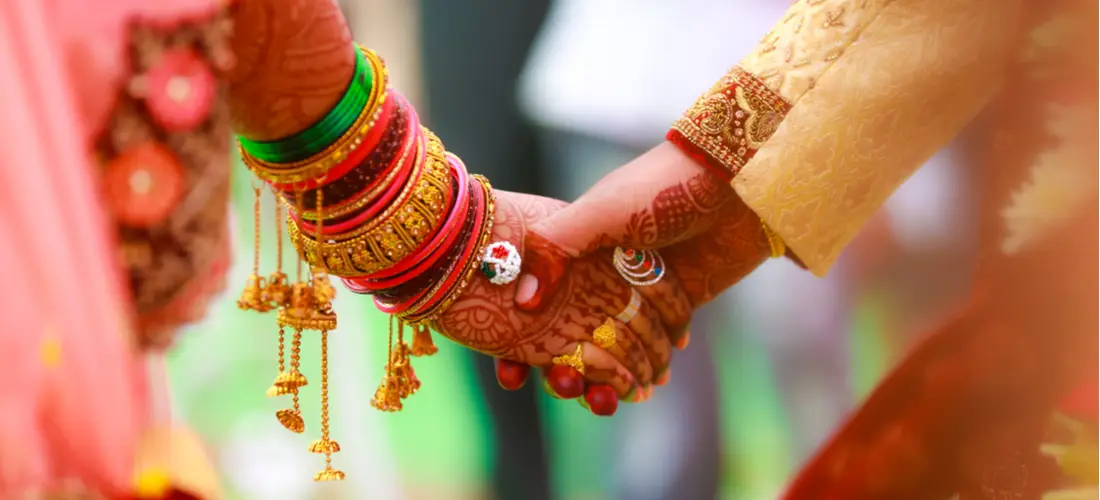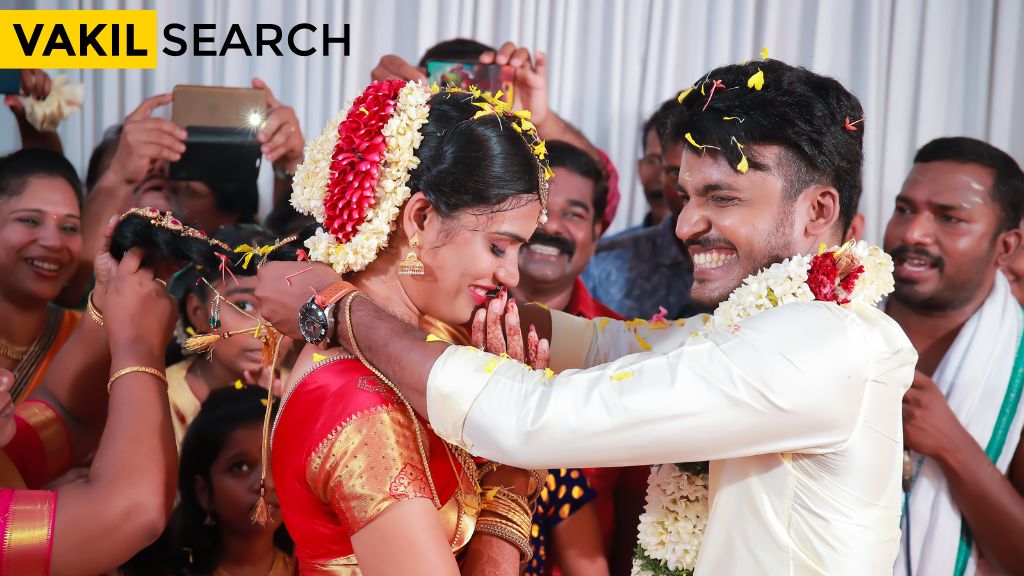Understand legalities, streamline paperwork, update essential documents, and consider important factors. Gain insights to ensure a smooth transition into your new identity.
Guide to Change Your Last Name After Marriage
Indian weddings encompass a grand celebration that spans beyond a single day, with engagement, haldi, mehndi, sangeet, and the wedding itself, culminating in a joyful reception. However, the journey doesn’t conclude here; a series of legal formalities, including changing one’s last name, lie ahead. This guide is tailored to navigate you through the step-by-step process of changing your last name after marriage in India.
Although a prevalent tradition for women to adopt their partner’s last name exists, it’s crucial to note that there is no legal obligation to do so. The choice is entirely yours. Despite this, sharing a common last name can bring certain advantages to both partners, as elucidated later in this article. Before delving into those benefits, let’s meticulously explore the procedure for changing your last name post-marriage.
From understanding the legalities to updating official documents, we’ll provide you with comprehensive insights to facilitate a smooth transition into this new chapter of your life. Whether you decide to embrace the tradition or retain your original last name, this guide empowers you with the information needed to make an informed decision.
Step 1 – Get Your Marriage Registered
Initiating the journey of changing your last name after marriage requires the official registration of your union. Begin by visiting the official website of the Indian government to access and download the marriage registration forms. Complete these forms meticulously and submit them at the Sub Registrar’s Office. Alongside the forms, prepare a set of passport-size photographs, your Aadhar card, PAN card, and other valid ID/address proofs. Within 45 to 60 days from your wedding date, secure your marriage registration certificate from the Registrar’s office. This vital certificate lays the foundation for the subsequent steps in the process.
Step 2 – Get an Affidavit with All the Details
Continuing your journey to adopt your husband’s last name, the next crucial step involves creating an affidavit expressing your intent to change your name. This affidavit should encompass essential details including your maiden name, the newly proposed name, your husband’s name, address, and a copy of your marriage certificate. Accompany the affidavit with a recent photograph and your signature. Once meticulously composed, ensure the affidavit is printed on a ₹10 stamp paper. This affidavit acts as a formal declaration of your decision to adopt a new name, solidifying your commitment to the name-changing process.
Step 3 – Your Next Step is to Notarise Your Affidavit
With your comprehensive affidavit in hand, the subsequent vital stride involves its notarisation. Pay a visit to a notary public to have your affidavit officially notarised. This step imparts legal validity to your declaration of intent to change your name. For candidates residing outside the country, an additional layer of attestation is required. In such cases, the affidavit must be duly attested by the embassy of the respective country within India. Notarisation ensures the authenticity of your decision and paves the way for a seamless transition to your new name.
Step 4 – Declaration to Third Party
Once you’ve fulfilled the essential formalities outlined in the affidavit for your last name change, the subsequent phase involves notifying third parties of this alteration. This is achieved through the publication of a notice in newspapers. To accomplish this, select one prominent national English daily and another local newspaper in the vernacular language. Typically, newspapers offer specific sections for such announcements. By making this declaration, you ensure that the transformation of your last name is widely recognised and acknowledged, solidifying the legal transition and updating your identity across various platforms.
Step 5 – Gazette Notification
Concluding the comprehensive journey of changing your name, the subsequent stride post newspaper advertisement is obtaining a national gazette publication. This pivotal step mandates a visit to the Controller of Publication of a National Gazette. Armed with your affidavits, newspaper advertisements of the name alteration, valid ID proof, Marriage Certificate, and essential documents, you formally initiate the process. The gazette publication solidifies your name change, making it a recognised and established legal transition. By undertaking this step, you ensure that your updated identity resonates across official records and platforms, bringing closure to the process of assuming your new last name.
Benefits of Changing Your Last Name Post Marriage
While the decision to change your last name after marriage is a personal one, there are distinct advantages to sharing the same surname as your partner. Although not obligatory by law, this choice offers practical and societal benefits that can simplify various aspects of your life. Let’s explore these advantages:
Simplified Official Paperwork: Aligning your last name with your spouse’s can streamline administrative tasks related to joint investments and financial matters, ensuring a smoother process for official documentation.
Hassle-Free School Admissions: When your children’s last name matches yours and your partner’s, school admissions and related paperwork become more straightforward, eliminating potential confusion.
Societal Recognition: Sharing a last name with your spouse carries social significance, signalling your marital bond and connection to others.
Reduced Explanation: By adopting your husband’s last name, you avoid the need to explain differing surnames to others, saving time and minimising unnecessary explanations.
While the decision is entirely yours, considering these practical benefits can help you make an informed choice about changing your last name after marriage.
Documents Needed To Change Your Last Name
Congratulations on officially changing your last name to your husband’s! However, the journey doesn’t end there. In India, updating your official documents is crucial to ensure their validity. This post outlines the process of updating your last name across various documents, facilitating a smooth transition. Here are the essential steps to take after changing your last name:
Update Your PAN Card:
Ensure your PAN card reflects your new surname. Attach your marriage certificate or government gazette copy, or a notarised joint affidavit with your spouse’s signature. Your PAN number remains the same, but the card will display your new name.
Update Banking Relationships:
Update your bank accounts with your new last name using a marriage certificate and joint notarised affidavit. Address updates and additional proofs might be necessary.
Update Loan Accounts:
Ensure your deposit and loan accounts reflect your new surname. Note that credit report updates are handled automatically by banks.
Re-Issue Passport:
If you need to change your last name on your passport, apply for a re-issue. Submit the old passport, marriage certificate, self-attested photocopy, and husband’s passport copy.
Update Other Documents:
Update driver’s license, voter’s ID, insurance policies, mutual funds, stocks, and nominee details. Also, update your Aadhar card by visiting an enrollment centre with your marriage certificate.
Things to Consider Before Changing Your Last Name Before Marriage
Embracing a shared last name after marriage is a beautiful choice, reflecting unity. Yet, before you embark on this journey, consider these vital aspects for a smooth transition:
Understand the Legalities:
Delve into your state’s legal process for changing your name. Ascertain if a marriage certificate suffices or if additional documents like ID proofs and newspaper ads are needed.
Grasp the Procedure:
Thoroughly review the step-by-step process outlined above. Familiarity empowers you to navigate the process confidently.
Exercise Patience:
Although the name-change process in India has been streamlined, remember that countless individuals go through it daily. Patience is key as your new identity takes time to establish.
Research Registration Costs:
While professionals offer name-change services, inquire about charges upfront. Understand the service fees, government expenses, and any ancillary costs involved. This clarity ensures a hassle-free experience.
Conclusion
In conclusion, you now possess a comprehensive guide on how to successfully change your last name after marriage. Each step outlined above serves as a roadmap to navigate this process seamlessly.
FAQs
Do I need to change my name after marriage?According to Indian law, choosing to change one’s name after marriage is a personal decision without any obligation. The name-changing process is uniform across all states and relatively uncomplicated. However, it’s important to note that the law permits an individual to change their name just once in their lifetime. |
How much does it cost to change your name?The cost for gazette publication typically ranges from ₹750 to ₹900, contingent on whether you opt for a public notice. Payment options include cash, demand draft, or postal order. |
Is it necessary to change your name?Name changes can occur for various reasons like marriage, divorce, religious conversion, or personal preference. Knowing the reason behind the change aids in selecting a suitable legal procedure. |
Read More,










